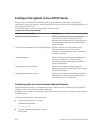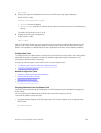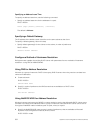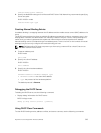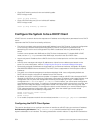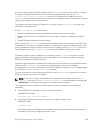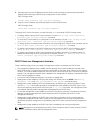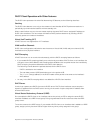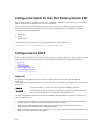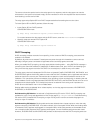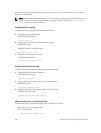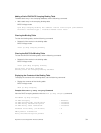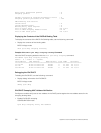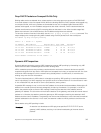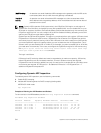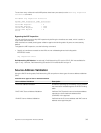
Configure the System for User Port Stacking (Option 230)
Set the stacking-option variable to provide stack-port detail on the DHCP server when you set the DHCP
offer. A stack can be formed when the units are connected.
Option 230 is the option for user port stacking. Use it to create up to eight stack groups. Define the
configuration parameters on the DHCP server for each chassis based on the chassis MAC address.
Configure the following parameters:
• unit number
• priority
• stack group ID
The received stacking configuration is always applied on the master stack unit.
option #230 "unit-number:3#priority:2#stack-group:14"
Configure Secure DHCP
DHCP as defined by RFC 2131 provides no authentication or security mechanisms. Secure DHCP is a suite
of features that protects networks that use dynamic address allocation from spoofing and attacks.
• Option 82
• DHCP Snooping
• Dynamic ARP Inspection
• Source Address Validation
Option 82
RFC 3046 (the relay agent information option, or Option 82) is used for class-based IP address
assignment.
The code for the relay agent information option is 82, and is comprised of two sub-options, circuit ID and
remote ID.
Circuit ID This is the interface on which the client-originated message is received.
Remote ID This identifies the host from which the message is received. The value of this sub-
option is the MAC address of the relay agent that adds Option 82.
The DHCP relay agent inserts Option 82 before forwarding DHCP packets to the server. The server can
use this information to:
• track the number of address requests per relay agent. Restricting the number of addresses available
per relay agent can harden a server against address exhaustion attacks.
• associate client MAC addresses with a relay agent to prevent offering an IP address to a client
spoofing the same MAC address on a different relay agent.
• assign IP addresses according to the relay agent. This prevents generating DHCP offers in response to
requests from an unauthorized relay agent.
308
Dynamic Host Configuration Protocol (DHCP)



